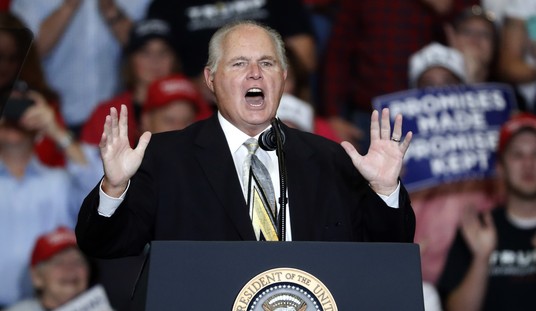Hurricane Sandy appears to have lifted Barack Obama to a very small lead in the national polls. Two weeks ago, Mitt Romney led in the Real Clear Politics national poll average by a bit over 1%. Today he trails by less than 1%. Barack Obama’s ratings as a strong national leader improved a few points from his four days off the campaign trail, as he played the role of executive in charge for the first time in a while. The hug from New Jersey Governor Chris Christie bathed the president in the warm glow of bipartisanship, which is always helpful with independents, especially women independents.
Whatever momentum Mitt Romney carried into the week dissipated as he was largely off the national news media during this period. Were the election held over this past weekend, I believe Obama would have won with a fairly comfortable margin in the Electoral College, perhaps 303-235, with Romney holding all the McCain states and picking up Indiana, North Carolina, and Florida.
This may still be the national result on Tuesday, though there is a bit of evidence in the PPP and Rasmussen national tracking polls that Obama’s numbers may have peaked over the weekend and since slipped a bit in the latest surveys. Obama’s numbers have also fallen in a few state surveys, including Florida, Virginia, Ohio, Iowa, and New Hampshire, while the president seems to be doing a bit better in Colorado.
There is also a new state that may have come into play — Pennsylvania. The latest polls in the Keystone State show the president with a lead in the 3-4 point range, perhaps a point bigger lead for Obama than in Ohio. In the past three presidential elections, Ohio was 9, 5, and 6 points more GOP-friendly than Pennsylvania. The fact that the two states are polling in synch with each other is evidence of the success of the Obama effort in Ohio and/or its complacency in Pennsylvania. It would be a bitter pill to swallow if Obama held Ohio but lost the presidency due to a shocking defeat in Pennsylvania, a state where Democrats enjoy a voter registration edge of over a million.
For Romney to win, he may need to win the popular vote by at least 1%, according to New York Times blogger Nate Silver. Silver’s model has Romney with more than a 60% chance to win if he wins the national popular vote by 1%, but only a 40% chance if he wins by 0.5%. With a 2% national margin, he would be the overwhelming favorite in the Electoral College. A tie in the national popular vote results in Obama winning the Electoral College 80% of the time in Silver’s simulations.
Could Silver’s model be wrong (he gives Romney a 13% chance overall to win) and Romney pull off a big upset? The blogger made his reputation with his successful picks in the 2008 presidential and Senate races. He picked 49 of 50 states right in the presidential contest (I had 48 right), missing only Indiana. I missed Indiana and North Carolina, which Obama carried by 0.3%. We both picked McCain to win Missouri, which he did by 0.1%.
The three states of Indiana, Missouri, and North Carolina were really the only states in doubt on Election Day 2008, so no one who was looking closely should have gotten fewer than 47 right. I would dare say that even Silver would admit that getting North Carolina and Missouri right was due more to luck than to his model’s precision accuracy. Indeed, his model’s accuracy was enhanced throughout the campaign by access to all the Obama campaign polls, which could be used to tweak his own model.
Similarly, there was only one nail-biter in the Senate races in 2008, the Franken-Coleman race in Minnesota. Silver was right on that one and I was wrong (our only disagreement in Senate picks in 2008), but a strong case can be made that Franken’s victory by 300 votes after a long recount may have been due more to superior lawyering than to an actual win in the votes cast. When the result is effectively a tie (e.g., the Bush-Gore race in 2000 in Florida, the Franken-Coleman race in 2008, or the 2008 presidential contest in Missouri or North Carolina), anyone who claims credit for a good pick is kidding himself.
Silver has argued that it is highly unlikely that a candidate who is 3 points behind in a very highly polled race (e.g., Romney in Ohio) can win that state. But in 2010, Harry Reid won his re-election to the Senate by more than 5 points, though the polls (and there were many of them) all pointed to a 2-3 point defeat for the majority leader. Silver also missed on the Colorado Senate race in 2010 and was behind the curve in predicting the GOP wave in the House that year.
Surprises happen. Polls can be wrong, particularly when votes are cast over a period of a month or more in some states, and when the percentage of those who respond to polls has dropped to an all-time low (below 10% in human phone surveys; below 5% in automated surveys). Many national and state polls have samples with a large edge for Democrats compared to Republicans, similar to the voting results in 2008 when Obama won nationally by 7.3%.
The latest CNN poll, which shows a 49-49 national tie, contains 41% Democrats and 29% Republicans; the only way you can get a tie is with Romney holding a big edge among independents (59% to 37%). Count me as highly skeptical of both the party ID split in the CNN poll and the size of Romney lead among independents.
For Romney to prove the pollsters wrong, there are a few paths to victory. If he carries North Carolina (quite likely, though not certain) and Florida (where he is favored but could lose if there is an Obama national win by 2% or 3%), then he would be at 235 Electoral College votes and would need to find 35 more to get to 270 (and 34 to get to 269, which would almost certainly be enough if the Electoral College race were tied at 269 and the election were tossed to the U.S House). The path to victory has increasing degrees of difficulty by state, with Virginia and its 13 Electoral College votes the easiest (polls are about even on average) to get Romney to 248.
Obama is ahead by 2 points or less in New Hampshire (4) and Colorado (9). Winning both would get Romney to 261. Obama’s lead is about 3 points on average in Ohio (18), Nevada (6), and Iowa (6). Pennsylvania (20), Michigan (16) , Wisconsin (10), and Minnesota (10) are all showing Obama with a 4 to 5 point lead on average, though individual polls in each state have Romney either tied or 1 point ahead. Wisconsin might be the best shot for Romney of the four given the strength of the get-out-the-vote effort put together by Governor Scott Walker. In Pennsylvania, the Romney campaign and its super PAC backers are heavily outspending Obama in the last week.
At the moment, the Intrade betting line favors Obama by just over 2 to 1. Nate Silver’s model suggests the odds are more like 6 to 1 or 7 to 1 against Romney. I would take the Romney side with Silver’s odds if he offered them (which of course he does not), and I think the Intrade numbers better reflect the current state of the race. Obama is favored, but it should not be a total shock if Romney wins and carries Ohio to do it. I do not share the optimism of George Will, Michael Barone, or Dick Morris. These pundits see Romney winning comfortably with over 300 Electoral College votes. These forecasts suggest the current national and state polls are off by 3 to 5 points, if not more.
I think the oversampling problem exists, but the average error is not that high. The Obama team is counting on a national voting sample that is only 72% white. Even if Romney wins white voters by 20%, he will lose by more than 2% overall if Obama win by 60% among the other 28% of voters. A turnout with 75% white voters, and the same preference splits, produces a tie in the popular vote, which might not be enough for Romney given the Electoral College math. Romney may need to win by more than 20% among white voters, or hold Obama’s edge among minority voters below 60%, if the final split is 75-25 white/minority or below 75%.
More: Romney Rallies with Huge New Hampshire Crowd









Join the conversation as a VIP Member